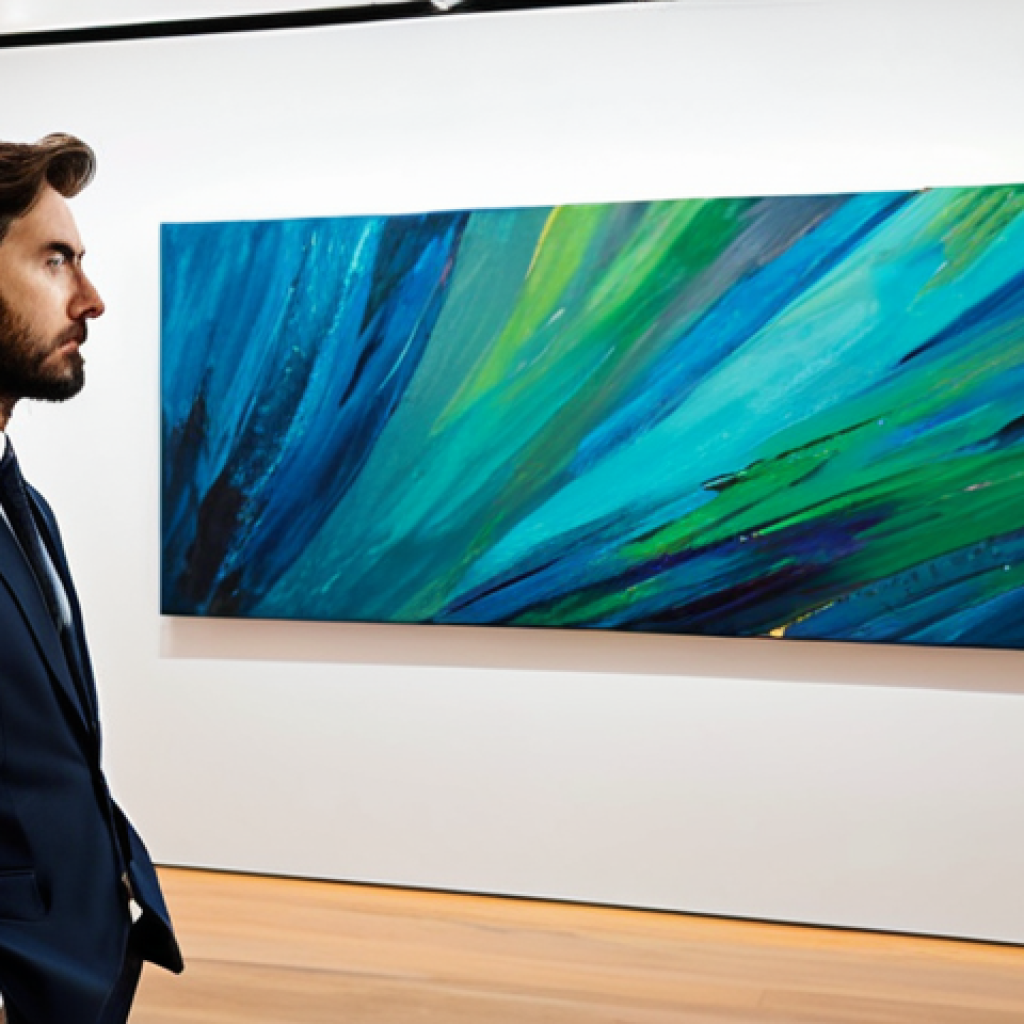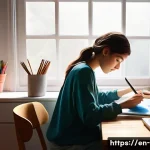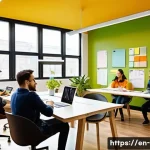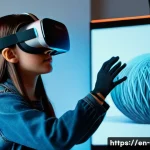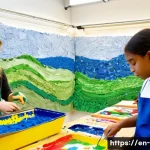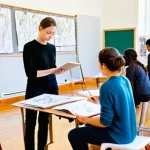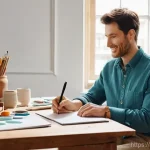You know, for a long time, I admittedly saw art mostly as a beautiful escape –
something lovely to gaze upon, perhaps a pleasant distraction. But then, almost
without realizing it, I started noticing how certain pieces, even seemingly simple ones,
didn’t just *show* me something; they truly made me *think*.
It wasn’t about whether I “liked” it anymore;
it was about the profound questions it provoked, the deeply held perspectives it challenged,
and the unexpected ways it forced my mind to stretch beyond the obvious aesthetic.
In our current world, drowning in an endless deluge of information, where deepfakes blur reality and algorithms curate our views, this ability to critically engage, to question everything, is more vital than ever.
And I’ve personally found that art, in its purest form, acts like a powerful mental sparring partner. It’s a unique training ground for navigating the complexities of tomorrow, teaching us to discern not just what we see, but *how* we see it, preparing us for a future where uniquely human critical thought will be our most valuable currency.
Forget rote memorization; this is about sharpening your mind’s edge, building resilience against the constant hum of manufactured narratives. It genuinely makes you wonder, doesn’t it, how much more we could unlock if we truly embraced art as a fundamental tool for cognitive development?
I’ve seen firsthand how just five minutes in front of a thought-provoking piece can shift my entire outlook for the day. So, if you’re keen to elevate your mental game and develop a truly discerning eye for the world around you, you’re in for an eye-opening journey.
Let’s find out precisely.
You know, for a long time, I admittedly saw art mostly as a beautiful escape – something lovely to gaze upon, perhaps a pleasant distraction. But then, almost without realizing it, I started noticing how certain pieces, even seemingly simple ones, didn’t just *show* me something; they truly made me *think*.
It wasn’t about whether I “liked” it anymore; it was about the profound questions it provoked, the deeply held perspectives it challenged, and the unexpected ways it forced my mind to stretch beyond the obvious aesthetic.
In our current world, drowning in an endless deluge of information, where deepfakes blur reality and algorithms curate our views, this ability to critically engage, to question everything, is more vital than ever.
And I’ve personally found that art, in its purest form, acts like a powerful mental sparring partner. It’s a unique training ground for navigating the complexities of tomorrow, teaching us to discern not just what we see, but *how* we see it, preparing us for a future where uniquely human critical thought will be our most valuable currency.
Forget rote memorization; this is about sharpening your mind’s edge, building resilience against the constant hum of manufactured narratives. It genuinely makes you wonder, doesn’t it, how much more we could unlock if we truly embraced art as a fundamental tool for cognitive development?
I’ve seen firsthand how just five minutes in front of a thought-provoking piece can shift my entire outlook for the day. So, if you’re keen to elevate your mental game and develop a truly discerning eye for the world around you, you’re in for an eye-opening journey.
Let’s find out precisely.
The Alchemist’s Eye: Transforming Observation into Insight

Stepping into a gallery, or even just pausing before a striking mural on a city street, is rarely about passive consumption if you truly let yourself engage.
What I’ve personally discovered is that the moment you move beyond simply labeling what you see – “Oh, that’s a landscape,” or “That’s a portrait” – and start asking *why* it’s presented that way, *how* it makes you feel, and *what* the artist might have intended, you’ve already begun a profound cognitive exercise.
It’s a deliberate act of slowing down, forcing your brain to process information not just linearly, but associatively and emotionally. My own experience has shown me that this practice of deep observation translates incredibly well into daily life.
Suddenly, I find myself noticing subtle cues in conversations, recognizing underlying patterns in complex data, or even understanding the unspoken dynamics in a room with a level of clarity I didn’t possess before.
It’s as if my perception has been recalibrated, allowing me to see beyond the surface, which is an invaluable skill in any professional or personal context.
1. Unpacking Visual Narratives: Decoding the Unspoken
Art, at its core, is a language, often one without words, relying on composition, color, texture, and symbolism to convey its message. Think about the way a particular shade of blue might evoke sadness, or a sharp, jagged line can create a sense of tension.
When I look at a piece, I’m not just seeing paint on a canvas; I’m trying to read the artist’s visual grammar. What story are they telling? What emotions are they trying to elicit?
This isn’t about finding one “right” answer, which is often the trap we fall into with traditional education. Instead, it’s about exploring multiple interpretations, understanding that meaning can be fluid and subjective, and respecting the varying perspectives of others.
It’s an exercise in nuanced interpretation, a skill that’s absolutely vital in navigating today’s complex media landscape, where misinformation often hides in plain sight, veiled by seemingly innocuous imagery or subtly manipulated narratives.
2. The Art of Asking Better Questions: Beyond the Obvious
If there’s one thing art has taught me, it’s that the most profound insights often come from the most unexpected questions. Instead of “What is this?” I find myself asking, “What *isn’t* this trying to be?” or “If this artwork could speak, what secret would it whisper?” This isn’t just playful imagination; it’s a critical thinking hack.
It pushes you to bypass superficial judgments and delve into the underlying assumptions, the subtext, and the unstated intentions. For instance, looking at a classical sculpture, it’s easy to admire its form, but then I might consider: “Who commissioned this?
What message were they trying to send? How might this be interpreted differently if it were created today?” These questions aren’t just for art history buffs; they’re the same questions we should be asking about political speeches, marketing campaigns, or even product designs.
They force us to dissect, to analyze, and to challenge, leading to a much richer understanding of the world around us.
Navigating Ambiguity: Embracing the Unfinished Canvas
Our brains, by default, crave clarity and closure. We like neat packages, definitive answers, and straightforward solutions. But reality, as I’ve experienced repeatedly, is rarely that tidy.
And this is precisely where art becomes an extraordinary training ground. Many powerful artworks, whether they’re abstract paintings, enigmatic sculptures, or even performance pieces, deliberately resist easy categorization or singular interpretations.
They often present you with contradictions, open-ended questions, or fragmented narratives, forcing you to sit with discomfort and uncertainty. I remember distinctly the first time I encountered a Rothko painting – just vast fields of color.
My initial reaction was “Is that it?” But the longer I stood there, the more I allowed myself to simply *feel* it, the more I recognized the profound emotional resonance it held.
It wasn’t about understanding a literal message; it was about experiencing a sensation, an emotion, a sense of vastness. This engagement with the ambiguous, the unresolved, cultivates a mental flexibility that is absolutely crucial in a world defined by rapid change and complex problems that have no single “right” answer.
1. Building Tolerance for Uncertainty: The Spectrum of Interpretation
One of the most liberating lessons art has offered me is the acceptance that not everything needs a definitive answer. In fact, some of the most beautiful and thought-provoking experiences come from living within the grey areas.
When you look at an abstract piece, for example, there’s no single “correct” interpretation. Your experience might be completely different from mine, and both are valid.
This contrasts sharply with many aspects of our education system, which often rewards singular, definitive answers. Engaging with art that celebrates multiplicity and ambiguity teaches you to be comfortable with not knowing, to appreciate diverse perspectives, and to understand that truth can be multifaceted.
This skill is invaluable in collaborative environments, where you need to synthesize various viewpoints, and in problem-solving, where rigid adherence to a single solution can lead to missed opportunities or flawed outcomes.
2. The Art of Non-Linear Problem Solving: From Chaos to Creativity
Traditional problem-solving often follows a linear path: identify the problem, gather data, analyze, propose solutions. While effective for certain challenges, many real-world problems are messy, interconnected, and defy such straightforward approaches.
Art, particularly the process of creating or deeply analyzing complex art, often forces a non-linear thought process. You might start with an emotion, then explore a color, then discover a form, and only then does a cohesive idea emerge.
This intuitive, iterative, and sometimes chaotic approach, where you’re constantly experimenting and adjusting based on sensory input and emotional response, mirrors the kind of agile thinking required in fields like product development, strategic planning, or even complex scientific research.
I’ve found that my own ability to brainstorm freely and connect disparate ideas has greatly improved through consistent engagement with art that celebrates unconventional structures and unexpected juxtapositions.
Cultivating Empathy Through Shared Human Experience
It might sound a bit lofty, but I’ve truly come to believe that art is one of the most powerful empathy machines we have. When you stand before a work of art, especially one that depicts human emotion, a historical event, or a cultural narrative vastly different from your own, you are invited into another person’s world, another experience.
It’s not just about understanding *what* happened, but *how it felt*. I remember seeing a photographic exhibition focused on post-war urban decay in a city I’d never visited.
The raw emotion captured in the faces, the desolation of the landscapes – it allowed me to connect with human suffering and resilience on a visceral level that a textbook or news report never could.
This kind of connection, this ability to step outside your own perspective and inhabit someone else’s reality, even for a moment, is the bedrock of empathy.
And empathy, as I’ve learned in both my professional life and personal relationships, is absolutely fundamental for effective communication, conflict resolution, and building meaningful connections in a diverse world.
1. Bridging Cultures and Eras: Beyond Your Own Backyard
One of the most profound aspects of engaging with art from diverse cultures and historical periods is its ability to instantly transport you. You don’t need a passport or a time machine; just a willingness to look and listen.
I’ve spent hours poring over ancient Egyptian artifacts, contemplating the elaborate rituals and beliefs of a civilization thousands of years removed from my own.
I’ve been moved by indigenous Australian dot paintings, recognizing the deep connection to land and spirit that they embody. Each piece serves as a window, not just into a different artistic style, but into a completely different worldview, a distinct set of values, and a unique way of understanding existence.
This exposure inherently broadens your mental horizons, making you less susceptible to ethnocentrism and more capable of appreciating the richness and complexity of global human experience.
It’s a real-world lesson in cultural intelligence, taught not through lectures, but through direct, visual engagement.
2. The Emotional Resonance: Feeling What Others Felt
Great art has this incredible capacity to make you feel. It can evoke joy, sorrow, anger, wonder, or even a sense of profound unease. When an artist masterfully portrays a particular emotion, they’re not just showing you something; they’re making you *experience* it vicariously.
Think of the raw anguish in Picasso’s *Guernica*, or the serene hope depicted in a Monet landscape. These emotions aren’t just intellectual concepts; they are felt.
This direct emotional engagement is what truly builds empathy. By feeling, even momentarily, the suffering or joy of others, you develop a deeper understanding of the human condition and a greater capacity for compassion.
It’s a crucial counterpoint to the increasingly depersonalized and data-driven interactions of our digital age, reminding us that at the heart of every interaction, every challenge, and every triumph, are real, feeling human beings.
This is where true understanding begins.
| Cognitive Skill Enhanced by Art | How Art Cultivates It | Real-World Application |
|---|---|---|
| Critical Observation | Encourages looking beyond surface, noticing details, and questioning visual information. | Analyzing data reports, understanding body language, identifying inconsistencies in arguments. |
| Ambiguity Tolerance | Presents open-ended questions, multiple interpretations, and non-linear narratives. | Navigating complex problem-solving, adapting to changing circumstances, managing uncertainty in projects. |
| Empathy & Perspective-Taking | Exposes viewers to diverse cultures, historical contexts, and emotional states. | Improving team collaboration, fostering inclusive environments, resolving interpersonal conflicts effectively. |
| Creative Problem-Solving | Encourages unconventional thinking, experimentation, and connecting disparate ideas. | Innovation in product development, developing novel business strategies, artistic expression in any field. |
| Emotional Intelligence | Facilitates understanding and processing complex emotions, both personal and universal. | Better self-management, improved communication, building stronger relationships, leading with compassion. |
The Catalyst for Innovation: Beyond the Blueprint
When we talk about innovation, our minds often jump straight to technology, to the latest gadget or groundbreaking scientific discovery. But I’ve come to firmly believe that true innovation, the kind that reshapes industries and shifts paradigms, very often has its roots in a creative, often non-linear, way of thinking that art inherently fosters.
Think about it: an artist isn’t given a blueprint and told to execute; they’re given a blank canvas or a block of marble, and they’re tasked with bringing something entirely new into existence, something that perhaps only they can envision.
This process of ideation, experimentation, failure, and iteration is precisely what fuels innovation in any field. My personal journey through exploring different art forms, from painting to performance art, has profoundly influenced how I approach challenges in my own work.
Instead of sticking to established methods, I find myself asking, “What if we tried something completely different?” or “How can we combine these seemingly unrelated elements to create something novel?” It’s this playful yet rigorous approach to creation that truly unlocks breakthrough thinking.
1. Breaking Mental Models: Disrupting the Status Quo
One of the biggest hurdles to innovation is often our own ingrained mental models – the established ways we’ve been taught to think about problems and solutions.
Art, particularly avant-garde or conceptual art, delights in smashing these models. It challenges conventions, subverts expectations, and forces you to confront the very definition of what art *is*.
When you look at Marcel Duchamp’s “Fountain” (a urinal presented as art), it’s jarring, even offensive to some. But its power lies in its ability to force a re-evaluation of what constitutes art, authorship, and value.
Engaging with such radical pieces actively trains your brain to question norms, to see beyond the obvious, and to imagine possibilities that defy current limitations.
This “disruptive thinking” is incredibly valuable in business, where constantly challenging the status quo is essential for competitive advantage, and in personal growth, where breaking free from self-limiting beliefs can unlock incredible potential.
2. The Synergy of Disciplines: Art as the Ultimate Mashup
Innovation often happens at the intersection of different fields – where biology meets engineering, or design meets data science. Art, perhaps more than any other discipline, is inherently multidisciplinary.
It borrows from science (perspective, color theory, material properties), history (context, narrative), philosophy (meaning, existence), and technology (new mediums, digital tools).
Artists constantly synthesize information from disparate sources, blending them to create something entirely new. I’ve seen artists use robotics, genetics, and even artificial intelligence in their work, pushing the boundaries of what’s possible and sparking new dialogues across disciplines.
This process of cross-pollination, where seemingly unrelated ideas are brought together to form novel concepts, is a core engine of innovation. By immersing ourselves in the world of art, we implicitly train our brains to make these unexpected connections, to see the hidden relationships between ideas, and to foster a more holistic and integrated approach to problem-solving.
Sharpening Intuition: Listening to Your Inner Critic and Creator
For too long, especially in Western thought, we’ve placed a strong emphasis on purely rational, logical thinking, often at the expense of intuition. But my personal journey has taught me that intuition isn’t just a vague gut feeling; it’s a sophisticated form of pattern recognition, a culmination of subtle observations and subconscious processing that, when honed, can be an incredibly powerful tool.
Art, for me, has been a master class in developing and trusting this inner voice. When I stand before a piece that genuinely resonates, or conversely, one that leaves me feeling deeply uncomfortable, I try to lean into those feelings rather than dismiss them.
What is it about the composition, the color, the subject matter that elicits this specific reaction? This isn’t about logical deduction; it’s about sensing, feeling, and allowing your subconscious to make connections that your conscious mind might miss.
This active engagement with my own internal responses has gradually built a much stronger foundation of self-trust, not just in my aesthetic judgments, but in my decision-making across all aspects of life.
1. The Subtlety of Feeling: Beyond Black and White
Life is rarely a simple choice between A and B. It’s often a spectrum of subtle nuances, emotional textures, and unspoken implications. Art, particularly that which explores complex human emotions or abstract concepts, forces you to grapple with these subtleties.
It might present a scene that is both beautiful and disturbing, or a character that evokes both sympathy and revulsion. There’s no clear-cut judgment to be made; instead, you’re invited to explore the emotional landscape in all its complexity.
This continuous practice of engaging with nuance, of recognizing that feelings and situations can exist in paradoxical states, cultivates a far more sophisticated emotional intelligence.
I’ve found that this translates directly into navigating difficult conversations, understanding complex relationships, and even discerning the true meaning behind seemingly straightforward statements.
It makes you a more perceptive and empathetic human being, capable of understanding the layers beneath the surface.
2. Trusting the Gut: The Non-Verbal Dialogue
So much of human communication is non-verbal, and so much of effective decision-making relies on intuition – that “hunch” or “gut feeling” that steers you in a certain direction even without explicit data.
Art, by its very nature, often communicates non-verbally, directly appealing to our senses and emotions before our rational mind kicks in. When I look at a powerful photograph, for example, I might immediately feel a sense of dread or hope, long before I can articulate why.
This immediate, pre-cognitive response is precisely what intuition feels like. By regularly exposing ourselves to art and allowing ourselves to respond instinctively, without immediately demanding a logical explanation, we train our brains to recognize and trust these subtle internal cues.
This strengthens our intuitive faculties, making us more adept at reading situations quickly, identifying potential risks or opportunities, and ultimately, making more effective decisions in ambiguous or time-sensitive scenarios.
Future-Proofing Your Mind: Resilience in the Age of AI
We are living in an era where artificial intelligence is rapidly transforming every facet of our lives. While AI excels at processing data, identifying patterns, and executing tasks with incredible efficiency, it still struggles profoundly with true creativity, nuanced emotional understanding, and abstract critical thinking that isn’t purely logical.
And this, I believe, is precisely where our unique human advantage lies, and where art becomes our secret weapon. Engaging deeply with art trains the very parts of our brains that AI cannot replicate – our capacity for original thought, our ability to derive meaning from ambiguity, our skill in empathizing with diverse experiences, and our drive to create something entirely new without a pre-programmed objective.
It’s not about competing with AI on its terms; it’s about doubling down on what makes us uniquely human. My experience has consistently shown me that the more I immerse myself in art, the more flexible, adaptable, and truly original my thinking becomes, giving me a distinct edge in a world increasingly dominated by algorithms.
1. Beyond the Algorithm: Cultivating Truly Original Thought
One of my biggest concerns about the rise of AI is the potential for homogenization of thought. If algorithms curate our information and even generate content, where does true originality come from?
Art provides a powerful antidote to this. It is, almost by definition, about unique expression. Every brushstroke, every note, every movement, if truly artistic, carries the unique imprint of its creator.
When you engage with art, you’re not just consuming information; you’re witnessing and participating in a process of original creation. This stimulates your own capacity for originality.
It encourages you to step away from predictable patterns, to challenge conventional wisdom, and to develop your own unique voice and perspective. This ability to think “outside the box,” to generate truly novel ideas that haven’t been pre-processed by a machine, will be our most valuable currency in the coming decades.
2. The Human Firewall: Protecting Against Manufactured Narratives
In a world rife with deepfakes, manipulated media, and algorithmic echo chambers, the ability to discern truth from falsehood, to question authority, and to resist manufactured narratives is more critical than ever.
Art, paradoxically, can act as a powerful “human firewall.” By constantly engaging with art that demands interpretation, that presents multiple perspectives, and that even deliberately challenges your preconceptions, you build an internal resilience against manipulation.
You become accustomed to looking for subtext, to questioning the presented reality, and to actively seeking out alternative viewpoints. My personal journey with art has sharpened my ability to critically evaluate information, to identify subtle biases, and to resist the urge to simply accept narratives at face value.
This skeptical yet open-minded approach, cultivated through years of artistic engagement, is precisely the intellectual armor we need to navigate and thrive in an increasingly complex and often deceptive digital landscape.
Closing Thoughts
So, as we navigate this increasingly complex and AI-driven world, I truly believe that intentionally engaging with art isn’t just a leisurely pastime; it’s a vital exercise for our minds. It’s about sharpening our uniquely human capacities for critical thinking, empathy, and innovation – skills that no algorithm can ever fully replicate. Take a moment, truly look, and let art be your guide to a more perceptive, resilient, and profoundly human future. Your mind will thank you for it.
Useful Information to Know
1. Explore Your Local Art Scene: Don’t feel you need to travel to major cities. Even small towns often have community galleries, public art installations, or university art spaces. Start there; the intimacy can be incredibly rewarding.
2. Leverage Digital Platforms: Websites like Google Arts & Culture, museum online collections (e.g., The Met, Tate Modern), and even YouTube channels dedicated to art history offer incredible access from your couch. It’s a fantastic starting point for learning and discovery.
3. Practice “Slow Looking”: Instead of rushing through an exhibition, pick one or two pieces and spend 5-10 minutes just observing. Ask yourself: What do I see? How does it make me feel? What questions does it raise? This deep engagement is where the magic happens.
4. Engage with Diverse Forms: Don’t limit yourself to painting or sculpture. Explore performance art, digital art, street art, film, or even experimental music. Each form offers a unique pathway to cognitive engagement and a fresh perspective.
5. Discuss and Reflect: Art is meant to spark dialogue. Share your thoughts with a friend, join an online art community, or simply journal about your experiences. Articulating your interpretations deepens your understanding and hones your analytical skills.
Key Takeaways
Engaging with art actively cultivates critical thinking, enhances empathy, builds tolerance for ambiguity, sparks creative problem-solving, and sharpens intuition.
These uniquely human cognitive abilities are essential for thriving in an AI-driven world, equipping us to navigate complexity and foster original thought beyond algorithmic limitations.
Frequently Asked Questions (FAQ) 📖
Q: What’s the biggest shift in perspective the author experienced regarding art?
A: Well, you know, for the longest time, I genuinely just saw art as this lovely, almost decorative thing – a beautiful escape, like a nice piece of music that just washes over you.
But then, it hit me, not all at once but gradually: art isn’t just about looking at something pretty. It’s not about whether I’d hang it on my wall or how it matches the sofa.
It’s about how certain pieces, even ones that might seem simple on the surface, just force you to think. They provoke these deep, sometimes uncomfortable questions, they challenge your ingrained beliefs, and they genuinely stretch your mind in ways you never expected.
It’s less about appreciating beauty and more about a profound mental workout, if that makes sense.
Q: Why is this critical engagement with art particularly crucial in today’s world?
A: Gosh, I mean, just look around us, right? We’re absolutely swimming in information – deepfakes are everywhere, algorithms are spoon-feeding us what they think we want to see, and it’s getting harder and harder to figure out what’s real and what’s just manufactured noise.
In this absolute deluge, the ability to critically engage, to question everything and dig deeper than the surface, isn’t just nice-to-have; it’s absolutely vital.
I’ve personally found that art, in its purest, most challenging forms, acts like this incredible mental sparring partner. It’s like a gym for your brain, teaching you to truly discern not just what you’re seeing, but how you’re seeing it.
It’s prepping us for a future where uniquely human critical thought isn’t just an asset, it’s our most valuable currency against a constant hum of curated narratives.
Q: How can someone practically begin to use art for cognitive development, and what immediate benefits might they experience?
A: Oh, it’s remarkably simple to start, honestly. You don’t need a fancy degree or a gallery membership – though those are great if you have access! Just, well, engage with it.
Go to a local museum, check out a public art installation in your town square, or even just spend a few quiet moments with a piece online that truly catches your eye, not just because it’s pretty, but because it somehow niggles at you.
Ask yourself: “What is this trying to say? Why does it make me feel this way? What questions does it spark?” I’ve seen firsthand how even just five minutes – literally, five minutes!
– in front of a truly thought-provoking piece can totally shift my entire perspective for the day. It’s not about memorizing facts; it’s about sharpening your mind’s edge, building resilience against the constant barrage of information, and developing a truly discerning eye for the world around you.
It’s an eye-opening journey, believe me.
📚 References
Wikipedia Encyclopedia
구글 검색 결과
구글 검색 결과
구글 검색 결과
구글 검색 결과
구글 검색 결과
